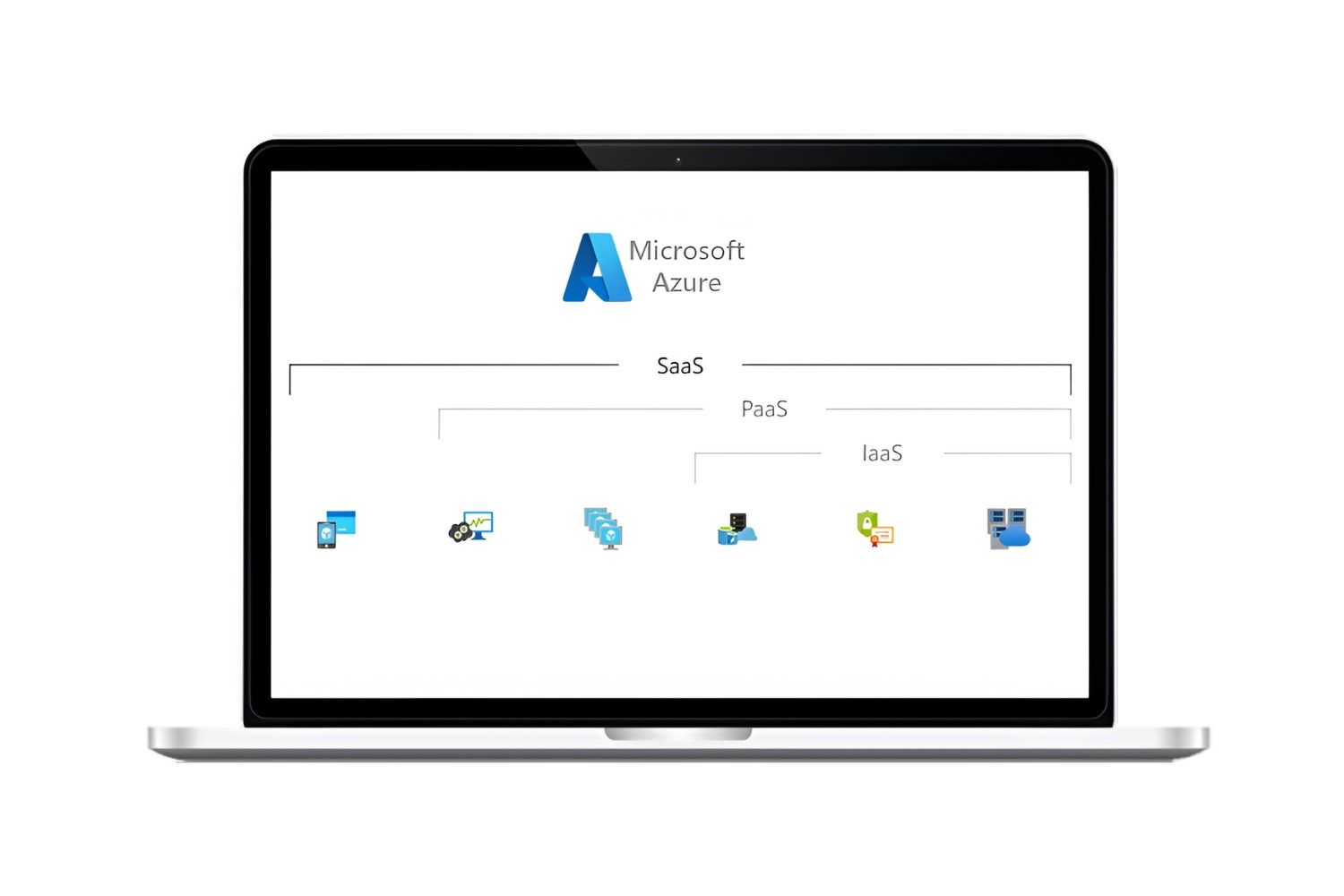Introduction
Welcome to the world of Azure SaaS! In this article, we’ll explore the concept of Azure SaaS and its various aspects. Whether you’re a business owner, an IT professional, or simply someone curious about cloud computing, understanding Azure SaaS is crucial.
So, what exactly is Azure SaaS? Well, Azure SaaS stands for Azure Software as a Service. It is a cloud computing model that allows users to access and use software applications over the internet, without the need for installation and maintenance on their local devices.
Azure SaaS offers a wide range of applications and services that cover various business needs, including customer relationship management (CRM), enterprise resource planning (ERP), collaboration tools, analytics, and more. Instead of purchasing software licenses and investing in hardware infrastructure, organizations can simply subscribe to Azure SaaS offerings and pay based on their usage.
With Azure SaaS, businesses can enjoy numerous benefits. Firstly, it eliminates the need for complex software installations and updates. All the maintenance tasks, including software upgrades and security patches, are handled by the service provider, allowing users to focus on their core tasks.
Secondly, Azure SaaS provides scalability and flexibility. Users can easily scale up or down their usage based on their changing needs and only pay for what they use. This eliminates the need to invest in expensive hardware and software licenses upfront, making it a cost-effective solution for businesses of all sizes.
Additionally, Azure SaaS offers seamless collaboration and accessibility. Since the applications and data are stored in the cloud, users can access them from anywhere, using any device with an internet connection. This enhances productivity and enables remote work, which is especially valuable in today’s highly connected world.
Now that we have a general understanding of Azure SaaS, let’s explore some real-world examples to better grasp its practical applications. We’ll also delve into the architecture of Azure SaaS and its key features. So, let’s dive in and unravel the fascinating world of Azure SaaS!
Definition of Azure SaaS
Azure SaaS, which stands for Azure Software as a Service, is a cloud computing model that provides users with access to software applications over the internet. Unlike traditional software models where applications need to be installed and maintained on local devices, Azure SaaS offers a more convenient and flexible approach.
In Azure SaaS, the software applications are hosted and managed by a cloud service provider, such as Microsoft Azure. Users can access the applications through web browsers or dedicated client applications, without the need for complex installations or infrastructure setup.
One of the key characteristics of Azure SaaS is that it is delivered on a subscription-based model. Organizations subscribe to the services they need, and they are billed according to their usage, typically on a monthly or annual basis. This eliminates the need for upfront investments in software licenses and hardware infrastructure, making it a cost-effective solution for businesses of all sizes.
With Azure SaaS, the responsibility for maintaining the software and infrastructure falls on the cloud service provider. This includes tasks such as software updates, security patches, data backups, and system maintenance. Users can focus on utilizing the applications and leveraging their functionalities without worrying about these technical aspects.
Another important aspect of Azure SaaS is its multi-tenancy architecture. Multiple organizations or users can access and use the same application, while their data and configurations are logically separated and protected. This allows for efficient resource utilization and enables rapid deployment and scalability.
Furthermore, Azure SaaS offers great flexibility and scalability. Users can easily scale up or down their usage based on their needs, without any disruptions. This makes it ideal for businesses with fluctuating demands and allows them to optimize their costs by paying only for the resources they actually utilize.
Overall, Azure SaaS provides organizations with a hassle-free and cost-effective way to access and utilize software applications. By outsourcing the management and maintenance tasks to the cloud service provider, businesses can focus on their core activities, boost collaboration, and drive innovation.
Benefits of Azure SaaS
Azure SaaS offers a wide range of benefits that make it an attractive choice for businesses of all sizes. Let’s explore some of the key advantages of adopting Azure SaaS:
1. Cost Savings: Azure SaaS eliminates the need for upfront investments in software licenses and hardware infrastructure. With a subscription-based pricing model, businesses only pay for the services they use, resulting in significant cost savings. The cloud service provider handles all the maintenance and infrastructure costs, reducing the burden on organizations.
2. Scalability and Flexibility: Azure SaaS allows organizations to easily scale their usage up or down based on their needs. Whether it’s adding new users, increasing storage capacity, or accessing additional features, businesses can quickly adapt to changing requirements without any disruptions. This scalability and flexibility enable businesses to be more agile and responsive to market demands.
3. Accessibility and Collaboration: With Azure SaaS, users can access applications and data from anywhere, using any device with an internet connection. This enables seamless collaboration among teams, regardless of location. Employees can work together, share files, and collaborate in real-time, improving productivity and efficiency.
4. Automatic Updates and Maintenance: The responsibility for software updates, security patches, and system maintenance lies with the cloud service provider in Azure SaaS. This ensures that users are always using the latest version of the software, benefiting from new features and bug fixes. It also reduces the burden on IT teams, freeing up their time to focus on more strategic initiatives.
5. Enhanced Security and Compliance: Azure SaaS providers prioritize security and invest heavily in robust security measures. They employ multiple layers of security controls, data encryption, and regular audits to protect customer data. Compliance with industry regulations and standards is also ensured, which is particularly beneficial for businesses operating in highly regulated sectors.
6. Rapid Deployment: Azure SaaS enables businesses to quickly deploy software applications without the need for complex installations. The applications are ready to use, and users can start benefiting from their features almost instantly. This reduces time-to-market and allows businesses to stay ahead of their competition.
7. Continuous Support and Monitoring: Azure SaaS providers offer 24/7 technical support to address any issues or concerns that users may have. They also have robust monitoring systems in place to proactively detect and resolve any performance or availability issues. This ensures a seamless and uninterrupted user experience.
By leveraging the benefits of Azure SaaS, businesses can optimize their operations, reduce costs, improve collaboration, and enhance their overall productivity and efficiency. It enables organizations to focus on their core competencies while leveraging the expertise of cloud service providers to drive innovation and growth.
Examples of Azure SaaS Applications
Azure SaaS offers a vast array of applications across different industries and business functions. Let’s explore some popular examples of Azure SaaS applications:
1. Microsoft Office 365: Office 365 is one of the most well-known and widely used Azure SaaS applications. It includes popular productivity tools such as Word, Excel, PowerPoint, Outlook, and OneDrive. With Office 365, businesses can access these applications from any device with an internet connection and collaborate seamlessly on documents in real-time.
2. Dynamics 365: Dynamics 365 is a suite of Azure SaaS applications that cater to customer relationship management (CRM) and enterprise resource planning (ERP) needs. It includes applications like Dynamics 365 Sales, Dynamics 365 Marketing, Dynamics 365 Finance, and Dynamics 365 Supply Chain Management. These applications help businesses streamline their operations, manage customer relationships, and gain valuable insights.
3. Salesforce: Salesforce is a leading customer relationship management (CRM) solution that is built on the Azure SaaS platform. It offers a comprehensive set of tools to manage sales, marketing, and customer service processes. With Salesforce, businesses can track leads, engage with customers, and enhance their overall sales performance.
4. Adobe Creative Cloud: Adobe Creative Cloud is a collection of creative software applications, including Photoshop, Illustrator, InDesign, and Premiere Pro. These applications are accessible through Azure SaaS, allowing creative professionals to create, edit, and collaborate on design projects in the cloud.
5. Slack: Slack is a popular team collaboration tool that enables seamless communication and file sharing within organizations. It offers features like channels, direct messaging, and integration with other productivity tools. With Azure SaaS, businesses can leverage Slack for effective collaboration and improved team productivity.
6. Tableau: Tableau is a powerful data visualization and analytics tool. With Azure SaaS, businesses can leverage Tableau to analyze and visualize their data, gain insights, and make informed decisions. It offers a user-friendly interface and supports a wide range of data sources for seamless data integration.
7. Zendesk: Zendesk is a cloud-based customer service and support platform that helps businesses manage customer interactions. It offers features like ticket management, live chat, knowledge base, and customer self-service options. Azure SaaS enables organizations to leverage Zendesk to deliver exceptional customer support and improve customer satisfaction.
These are just a few examples of the many Azure SaaS applications available. From productivity and collaboration tools to CRM and analytics solutions, Azure SaaS offers a wide range of applications to cater to diverse business needs. Organizations can choose the applications that best suit their requirements and leverage the benefits of cloud computing to drive efficiency and innovation.
Overview of Azure SaaS Architecture
Azure SaaS architecture is designed to provide users with a seamless and reliable experience while accessing and using software applications in the cloud. Let’s take a look at the key components and principles behind Azure SaaS architecture:
1. Multi-Tenancy: Azure SaaS applications are designed to support multiple organizations or users, known as tenants, on a shared infrastructure. Each tenant’s data and configurations are logically separated and protected, ensuring privacy and security. This allows for efficient resource utilization and cost optimization.
2. Scalable Infrastructure: Azure SaaS leverages the scalability and elasticity of cloud computing. The infrastructure is designed to handle variable workloads and can dynamically scale resources up or down based on demand. This ensures that applications perform optimally and can handle high traffic volumes without interruptions.
3. Data Management: Azure SaaS applications utilize robust data management practices. Data is securely stored in the cloud and is accessible to users based on their access permissions. Regular backups and disaster recovery mechanisms are implemented to ensure data integrity and availability.
4. Application Lifecycle Management: Azure SaaS supports efficient application lifecycle management. The cloud service provider takes care of software updates, security patches, and performance improvements to ensure users are always on the latest version of the application. This reduces the burden on organizations and enables them to focus on utilizing the application’s capabilities.
5. Integration and API: Azure SaaS allows for seamless integration with other applications and services through APIs (Application Programming Interfaces). This enables organizations to connect their Azure SaaS applications with their existing systems and workflows, ensuring data consistency and enabling smooth data interchange.
6. Security and Compliance: Azure SaaS architecture prioritizes security and compliance. Robust security measures, such as data encryption, access controls, and firewalls, are implemented to protect user data. Compliance with industry regulations and standards is ensured, giving organizations peace of mind when it comes to data privacy and regulatory obligations.
7. Service Level Agreement (SLA): The cloud service provider typically offers a service level agreement that outlines the level of service and uptime guarantee for Azure SaaS applications. This provides organizations with assurance regarding application availability and performance.
Azure SaaS architecture provides the foundation for delivering reliable, scalable, and secure software applications in the cloud. It enables organizations to benefit from the flexibility and cost-efficiency of cloud computing without the complexities of managing infrastructure and software updates. With Azure SaaS, businesses can focus on their core activities while enjoying the advantages of a robust and innovative software ecosystem.
Key Features of Azure SaaS
Azure SaaS offers a range of compelling features that make it a popular choice for businesses looking to leverage the benefits of cloud computing. Let’s explore some of the key features of Azure SaaS:
1. Easy Accessibility: Azure SaaS applications can be accessed from anywhere, using any device with an internet connection. This allows users to work remotely, collaborate seamlessly, and access their applications and data on the go.
2. Pay-as-You-Go Pricing: Azure SaaS follows a subscription-based pricing model, where businesses only pay for the services they use. This flexible pricing structure eliminates the need for upfront investments and allows organizations to scale their usage up or down based on their needs, optimizing costs.
3. Automatic Updates and Maintenance: Azure SaaS takes care of all software updates and maintenance tasks. Users always have access to the latest version of the software, complete with new features and security enhancements, without any additional effort or downtime.
4. Seamless Collaboration: Azure SaaS applications enable seamless collaboration among teams. Multiple users can collaborate on documents, share files, and communicate in real-time, enhancing productivity and efficiency within organizations.
5. Scalability and Flexibility: Azure SaaS allows businesses to scale their usage up or down based on their needs. They can easily add or remove users, increase storage capacity, and access additional features as their requirements evolve. This scalability and flexibility enable businesses to adapt quickly to changing demands without disruptions.
6. Robust Security: Azure SaaS prioritizes security and implements advanced measures to protect user data. It employs data encryption, access controls, firewalls, and regular security audits to ensure data confidentiality and integrity. Compliance with industry regulations and standards is also maintained.
7. High Availability and Reliability: Azure SaaS applications are built on a robust and highly available infrastructure. The cloud service provider ensures high uptime and performance through redundant systems, disaster recovery mechanisms, and load balancing capabilities.
8. Integration Capabilities: Azure SaaS applications offer integration capabilities with other systems and services through APIs (Application Programming Interfaces). This enables seamless data interchange and integration with existing workflows, enhancing productivity and enabling organizations to leverage their existing investments.
9. Rapid Deployment: Azure SaaS applications can be rapidly deployed without the need for complex installations or infrastructure setup. This allows organizations to quickly implement new applications and features, reducing time-to-market and enabling rapid innovation.
10. Analytics and Insights: Azure SaaS applications often provide built-in analytics and reporting capabilities. Organizations can gain valuable insights from their data, make data-driven decisions, and optimize their operations for improved efficiency and performance.
Azure SaaS’s key features offer businesses the ability to access software applications easily, leverage collaboration and scalability, minimize IT maintenance, and enhance security and reliability. By embracing Azure SaaS, organizations can focus on their core activities and gain a competitive advantage by leveraging the power of the cloud.
Comparison with Other Cloud Service Models
When considering cloud computing options, it’s important to understand the differences between various cloud service models. Let’s compare Azure SaaS with other cloud service models to gain a better understanding of their unique characteristics:
1. Infrastructure as a Service (IaaS): In the IaaS model, organizations have control over the underlying infrastructure, including servers, storage, and networking. They are responsible for managing the operating systems, middleware, and applications running on the infrastructure. Unlike Azure SaaS, which provides fully managed software applications, IaaS offers more flexibility and customization options but requires more IT expertise and responsibility for infrastructure management.
2. Platform as a Service (PaaS): PaaS provides a higher level of abstraction compared to both Azure SaaS and IaaS. It offers preconfigured development platforms and environments to build, test, and deploy applications. Users only need to focus on developing their applications, while the cloud service provider handles the underlying infrastructure and runtime environment. PaaS removes the complexity of infrastructure management, but it provides less control and flexibility compared to IaaS.
3. Azure SaaS: Azure SaaS stands out as a cloud service model that offers fully managed software applications accessible over the internet. Users simply subscribe to the applications and access them without the need for installation or maintenance. This model provides the highest level of convenience and ease of use, as the cloud service provider takes care of all updates, security patches, and infrastructure maintenance. Organizations can focus on utilizing the software’s capabilities without worrying about the underlying infrastructure.
While IaaS and PaaS offer more flexibility and control, Azure SaaS provides a faster and more convenient way to access and use software applications without the complexities of infrastructure management. It removes the burden of maintenance and allows businesses to focus on their core activities.
Another crucial differentiator is the level of responsibility shared between the cloud service provider and the organization. With Azure SaaS, the provider is responsible for managing the software, infrastructure, and security, while the organization is responsible for utilizing the application effectively. In IaaS and PaaS, organizations have more responsibility for managing and securing their environments.
Ultimately, the choice between Azure SaaS, IaaS, and PaaS depends on the specific needs and priorities of the organization. If convenience, ease of use, and time-to-market are significant factors, Azure SaaS is the ideal choice. However, if organizations require more control and customized infrastructure, they may opt for IaaS or PaaS models.
Azure SaaS offers a balance between convenience and flexibility, making it a popular choice for businesses looking for hassle-free access to software applications with minimal maintenance efforts.
Considerations for Choosing Azure SaaS
When considering Azure SaaS as a cloud computing solution for your organization, several factors should be taken into account. Let’s explore some key considerations to keep in mind when choosing Azure SaaS:
1. Business Needs: Evaluate your organization’s specific requirements and determine if Azure SaaS aligns with your business needs. Consider the types of applications your organization requires, the level of customization needed, and how well Azure SaaS applications fit into your existing workflows and processes.
2. Scalability and Flexibility: Assess the scalability and flexibility offered by Azure SaaS. Consider if the platform can accommodate your organization’s growth and handle sudden changes in demand. Ensure that the subscription plans and pricing options allow you to scale your usage up or down as needed.
3. Integration Capabilities: Determine if Azure SaaS applications integrate seamlessly with your existing systems and workflows. Evaluate the availability of APIs and the ease of integration with other applications or services that your organization relies on. Smooth data interchange and integration are crucial for maximizing productivity and efficiency.
4. Security and Compliance: Security is a paramount consideration when choosing Azure SaaS. Ensure that the cloud service provider implements robust security measures, such as data encryption, access controls, and regular security audits, to protect your data. Additionally, verify that the provider complies with relevant industry regulations and standards that apply to your organization.
5. Support and Service Level Agreement (SLA): Assess the level of support and service provided by the Azure SaaS provider. Look for a well-defined and comprehensive SLA that outlines uptime guarantees, response times, and support availability. Consider whether the provider aligns with your organization’s requirements and expectations for ongoing support and maintenance.
6. Cost and ROI: Evaluate the cost implications of adopting Azure SaaS. Consider the subscription pricing model and compare it with the expected benefits and return on investment. Assess the potential cost savings from eliminating hardware infrastructure and maintenance expenses, as well as the value gained from improved productivity and scalability.
7. Vendor Reputation and Expertise: Consider the reputation and expertise of the Azure SaaS provider. Research the provider’s track record, customer reviews, and industry recognition. A reputable provider with proven expertise can offer assurance regarding the quality and reliability of their services.
8. Data Sovereignty: If your organization operates in multiple regions or countries, consider the data sovereignty regulations and ensure that the Azure SaaS provider can accommodate your compliance requirements. Verify that the provider offers the option to store data within specific jurisdictions if needed.
Taking these considerations into account will help you make an informed decision about adopting Azure SaaS for your organization. It’s essential to align your specific needs and requirements with the capabilities and features offered by Azure SaaS to maximize the benefits and value it can bring to your business.
Conclusion
Azure SaaS offers businesses a convenient and cost-effective way to access and utilize software applications in the cloud. With its subscription-based model, easy accessibility, automatic updates, and scalability, Azure SaaS empowers organizations to focus on their core activities while leveraging the capabilities of fully managed software applications.
Throughout this article, we have explored the definition of Azure SaaS, its benefits, and key features. We have seen how Azure SaaS compares to other cloud service models, such as IaaS and PaaS, and discussed considerations for choosing Azure SaaS for your organization.
By adopting Azure SaaS, businesses can enjoy advantages such as cost savings, scalability, flexibility, and seamless collaboration. The responsibility for software updates, maintenance, and security is transferred to the cloud service provider, allowing organizations to concentrate on their core competencies and innovation. Azure SaaS offers an array of applications across various industries, from productivity tools like Microsoft Office 365 to CRM solutions like Dynamics 365, catering to diverse business needs.
However, the suitability of Azure SaaS depends on the specific requirements of each organization. Factors such as business needs, integration capabilities, security, support, and cost must be carefully considered when making the decision.
In conclusion, Azure SaaS provides a compelling solution for businesses looking to leverage the benefits of cloud computing. Its convenience and ease of use make it an attractive choice for organizations of all sizes. By embracing Azure SaaS, businesses can unlock new opportunities for growth, collaboration, and innovation in today’s digitally connected world.

























